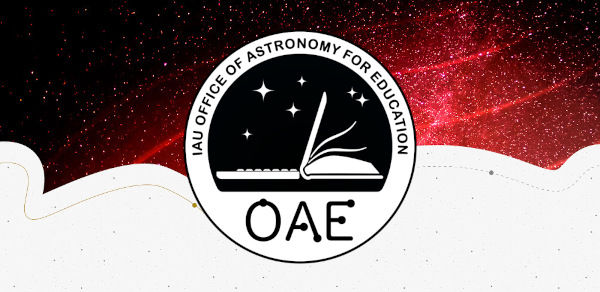This page describes an image Watchtower and Paddy Fields Under the Starry Sky
Image caption:
Winner in the 2022 IAU OAE Astrophotography Contest, category Still images of celestial patterns.
This image, taken in April 2022, shows the sky over a plantation field around a century-old watchtower guarding a village in the province of Guangdong, China. Throughout the ages, the sky has been used as a tool for navigation and also as a calendar. By watching the apparent movement of the stars, it is possible to follow the passing of time, thereby understanding the change of the seasons which in turn helps to plan out the best timings of agricultural work.
The most prominent constellations in this image are Orion and Canis Major, the Great Dog. Commonly associated with a giant hunter in Greek mythology, Orion is followed by his hound in the shape of the constellation Canis Major.
In China, the seven bright stars of the constellation Orion are paradoxically called Three Stars (Shen) and this is one of the 28 Lunar Mansions. The Babylonian pre-zodiac, the so-called “Path of the Moon”, had 17 constellations and included Orion (therein named “True Shepherd of the Heavens”). This is not really surprising because, even in the system of the 88 modern constellations, the Moon sometimes stands in the constellation Orion. The modern constellation boundaries were defined in the 1920s in such a way that the area of Orion ends a half degree south of the ecliptic, in order to avoid the Sun entering it. Still, the Moon and the planets do occasionally. Therefore, Orion is part of the Zodiac (a stripe 5 to 10 degrees around the ecliptic), part of the path of the Moon and, of course, also used by many cultural calendars all over the world.
Sirius, the bright star in the left half of the photograph, is the brightest star in the night sky, and has been used by many indigenous cultures to determine their calendars; the Egyptians awaited the Nile flood with Sirius’s heliacal rise, while the Romans connected its reappearance after its invisibility in daylight with the hottest summer time. In Old China, Sirius was considered a single-star asterism called The Wolf. The adjacent area was called The Market for Soldiers and the area in the southern part of Canis Major was imagined as the Bow with an Arrow.
The reddish bright star in the top right corner is Betelgeuse, a red supergiant and one of the largest stars that can be seen with the naked eye. Orion’s Great Nebula below Orion’s Belt should be mentioned, but also the fainter huge red arc that is called Barnard’s Loop is clearly shown in this photograph. This galactic nebula and the circular red nebula around Orion’s not-so-bright head are both parts of star-forming regions, while the red nebula to the upper left of Orion is the Rosette Nebula in the unrecognisable constellation of Monoceros.
Scroll to captions in other languages
Image credit:
Likai Lin/IAU OAE
DOI: 10.5281/zenodo.7425219
Related glossary terms:
Color
, Constellation
, Orion
, Red Supergiant
, Star
Categories:
Naked Eye Astronomy
, Stars
Image license: Creative Commons Attribution 4.0 International (CC BY 4.0) Creative Commons Attribution 4.0 International (CC BY 4.0) icons
The media file captions presented on the OAE website were written, translated and reviewed by a collective effort from the OAE, the OAE Centers and Nodes, the OAE National Astronomy Education Coordinators (NAECs) and other volunteers. You can find a full list of credits for our translation project here. All media file captions are released under a Creative Commons CC BY-4.0 license and should be credited to "IAU OAE". The media files themselves may have different licenses (see above) and should be credited as listed above under "credit".
Captions in Different Languages:
Image caption: Auszeichnung beim IAU OAE Astrofoto-Wettbewerb 2022, Kategorie Weitwinkelaufnahmen von Himmelsmustern.
Dieses im April 2022 aufgenommene Bild zeigt den Himmel über einem Plantagenfeld in der Nähe eines jahrhundertealten Wachturms, der einst ein Dorf in der Provinz Guangdong in China verteidigt hat. Im Laufe der Jahrhunderte wurde der Himmel sowohl als Hilfsmittel zur Navigation und auch als Kalender genutzt. Durch die Beobachtung der scheinbaren Bewegung der Sterne ist es möglich, den Lauf der Zeit zu verfolgen und so den Wechsel der Jahreszeiten zu verstehen, was wiederum hilft, die Zeitpunkte für landwirtschaftliche Arbeiten zu planen.
Die auffälligsten Sternbilder in diesem Bild sind Orion und der Große Hund (lat. Canis Major). In der griechischen Mythologie wird Orion gemeinhin mit einem großen Jäger in Verbindung gebracht, dem sein Hund in Form des Sternbilds Großer Hund folgt.
In China werden die sieben hellen Sterne des Sternbilds Orion paradoxerweise Drei Sterne (Shen) genannt, und dies ist eines der 28 Mondhäuser. Der babylonische Vor-Tierkreis, der so genannte "Pfad des Mondes", hatte 17 Sternbilder und enthielt auch Orion (darin "Wahrer Hirte des Himmels" genannt). Dies ist nicht wirklich überraschend, denn auch im System der 88 modernen Sternbilder steht der Mond manchmal im Sternbild Orion. Die modernen Sternbildgrenzen wurden in den 1920er Jahren so festgelegt, dass das Gebiet des Orion ein halbes Grad südlich der Ekliptik endet, um den Eintritt der Sonne in das Sternbild zu vermeiden. Dennoch treten der Mond und die Planeten gelegentlich ein. Daher ist der Orion Teil des Tierkreises (ein Streifen von 5° bis 10° um die Ekliptik), Teil der Mondbahn und wird natürlich auch von vielen kulturellen Kalendern auf der ganzen Welt verwendet.
Sirius, der helle Stern in der linken Hälfte des Fotos, ist der hellste Stern am Nachthimmel und wurde von vielen indigenen Kulturen zur Festlegung ihrer Kalender verwendet. Die Ägypter erwarteten die Nilflut mit dem heliakischen Aufgang des Sirius, während die Römer sein Wiedererscheinen nach seiner Unsichtbarkeit bei Tage mit der heißesten Sommerzeit in Verbindung brachten. Im alten China wurde Sirius als einzelner Stern betrachtet, der Der Wolf genannt wurde. Das angrenzende Gebiet wurde als Markt für Soldaten bezeichnet, und das Gebiet im südlichen Teil des Großen Hunds stellte man sich als Bogen mit Pfeil vor.
Der rötliche, helle Stern in der oberen rechten Ecke ist Beteigeuze, ein roter Überriese und einer der größten Sterne, die mit bloßem Auge zu sehen sind. Der große Orionnebel unterhalb des Gürtels des Orion sollte natürlich erwähnt werden, aber auch der schwächere große, rote Bogen, der Barnard's Loop genannt wird, ist auf dieser Aufnahme deutlich zu sehen. Dieser galaktische Nebel und der kreisförmige rote Nebel um den nicht ganz so hellen Kopf des Orion sind beide Teil von Sternentstehungsregionen, während der rote Nebel oben links vom Orion der Rosettennebel im nicht erkennbaren Sternbild Einhorn (lat. Monoceros) ist.
Image credit: Likai Lin/IAU OAU
Related glossary terms: Farbe , Orion , Roter Überriese , Stern , Sternbild Caption translation status: Not yet approved by a reviewer
Caption translators: Carolin Liefke
Image caption: Vincitore del concorso di astrofotografia IAU OAE 2022, categoria Immagini fisse di modelli celesti.
Questa immagine, scattata nell'aprile del 2022, mostra il cielo su un campo di piantagioni intorno a una secolare torre di guardia che sorveglia un villaggio nella provincia di Guangdong, in Cina. Nel corso dei secoli, il cielo è stato utilizzato come strumento di navigazione e come calendario. Osservando il movimento apparente delle stelle, è possibile seguire lo scorrere del tempo, comprendendo così il cambiamento delle stagioni, che a sua volta aiuta a pianificare i tempi migliori per i lavori agricoli.
Le costellazioni più evidenti in questa immagine sono Orione e Canis Major, il Cane Maggiore. Comunemente associato a un gigantesco cacciatore nella mitologia greca, Orione è seguito dal suo cane a forma di costellazione.
In Cina, le sette stelle luminose della costellazione di Orione sono paradossalmente chiamate Tre Stelle (Shen) e questa è una delle 28 Case Lunari. Il pre-zodiaco babilonese, il cosiddetto "Sentiero della Luna", contava 17 costellazioni e includeva Orione (ivi denominato "Vero Pastore dei Cieli"). Ciò non sorprende più di tanto perché, anche nel sistema delle 88 costellazioni moderne, la Luna si trova talvolta nella costellazione di Orione. I confini delle costellazioni moderne sono stati definiti negli anni Venti in modo tale che l'area di Orione termina mezzo grado a sud dell'eclittica, per evitare che il Sole vi entri. Tuttavia, la Luna e i pianeti vi entrano occasionalmente. Pertanto, Orione fa parte dello Zodiaco (una striscia di 5-10 gradi intorno all'eclittica), fa parte del percorso della Luna e, naturalmente, è utilizzato anche da numerosi calendari culturali in tutto il mondo.
Sirio, la stella luminosa nella metà sinistra della fotografia, è la stella più brillante del cielo notturno ed è stata utilizzata da molte culture indigene per determinare i loro calendari; gli Egizi attendevano l'inondazione del Nilo con la levata eliaca di Sirio, mentre i Romani collegavano la sua ricomparsa dopo l'invisibilità alla luce del giorno con il periodo estivo più caldo. Nell'Antica Cina, Sirio era considerato un asterismo a stella singola chiamato Il Lupo. L'area adiacente era chiamata Il Mercato dei Soldati e l'area nella parte meridionale del Cane Maggiore era immaginata come l'Arco con la Freccia.
La stella luminosa rossastra in alto a destra è Betelgeuse, una super gigante rossa e una delle più grandi stelle visibili a occhio nudo. Va citata la Grande Nebulosa di Orione, sotto la Cintura di Orione, ma in questa fotografia si vede chiaramente anche l'enorme arco rosso, più debole, chiamato L'Anello di Barnard. Questa nebulosa galattica e la nebulosa rossa circolare attorno alla testa non troppo luminosa di Orione sono entrambe parte di regioni in formazione stellare, mentre la nebulosa rossa in alto a sinistra di Orione è la Nebulosa Rosetta nell'irriconoscibile costellazione dell'Unicorno.
Image credit: Likai Lin/IAU OAU
Related glossary terms: Colore , Costellazione , Orione , Stella , Supergigante rossa Caption translation status: Not yet approved by a reviewer
Caption translators: Giuliana Giobbi









